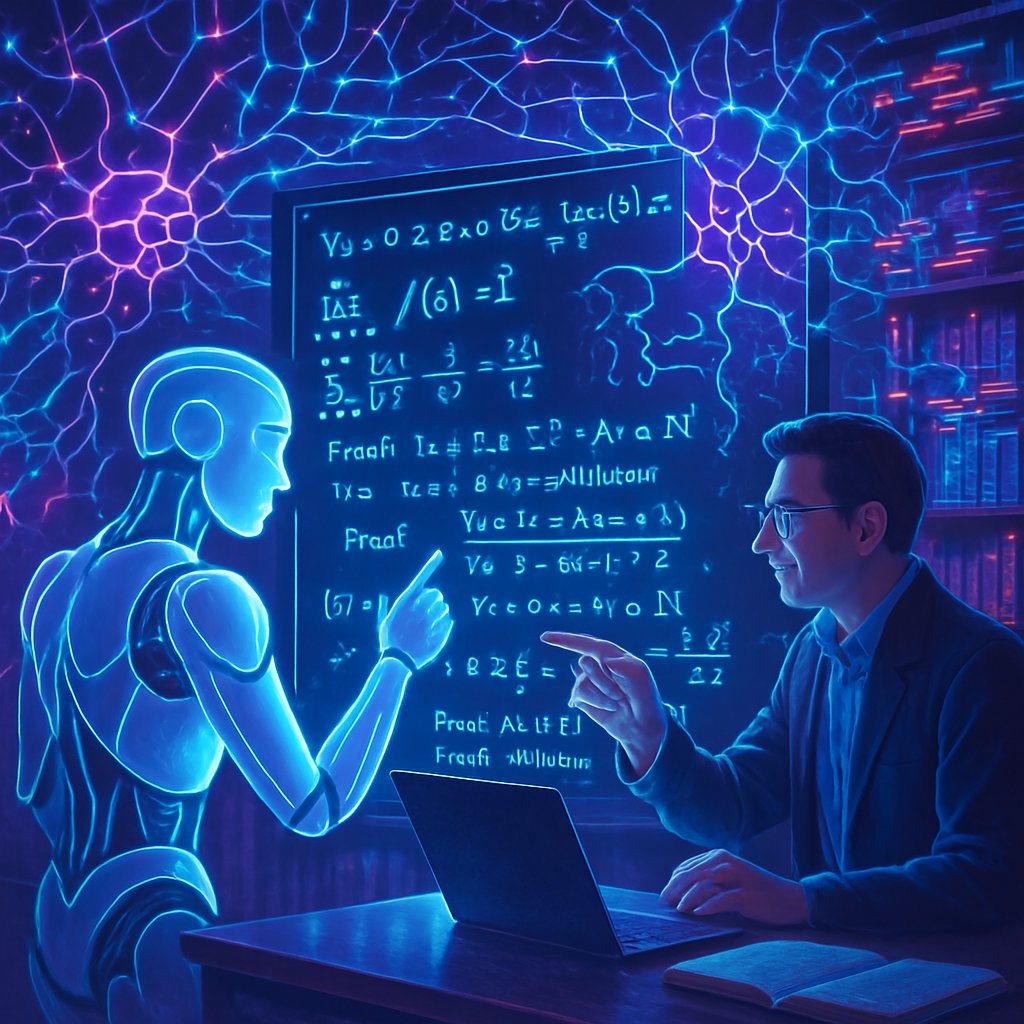Cracking the Code: How AI Is Revolutionizing Theorem Proving in Mathematics
In the ever-evolving world of Artificial Intelligence (AI), one of the most fascinating advancements is the ability of large language models (LLMs) to engage with mathematics, particularly in proving complex theorems. This isn't just a theoretical exercise; it has far-reaching implications across various fields, from computer science to economics. In this blog post, we’ll explore groundbreaking research that showcases how AI is changing the game in mathematical theorem proving.
The AI-Mathematics Intersection: A New Dawn
As some tech enthusiasts might say, we’re living in science fiction right now. Tools like ChatGPT and its successors are not just chatbots anymore; they're becoming essential partners in intellectual endeavors. This research involving AI in mathematics illustrates that these models can act as both provers (the ones attempting to demonstrate a theorem) and verifiers (those checking the validity of the proofs).
This capability is not just a novelty but a glimpse into a future where AI could significantly lighten the load for mathematicians. Imagine having an assistant that could rapidly test hypotheses or even propose new lines of inquiry. The consequences of this could be revolutionary, especially given the long-standing tradition of mathematics relying heavily on human intuition and creativity.
How Does the Process Work?
At the core of the research is a collaborative protocol that employs the latest LLM architecture—specifically OpenAI’s GPT-5. Let’s break down how these AI agents work together to prove theorems effectively:
Step 1: The Prover and The Verifier
- Prover Role: The AI tasked with creating mathematical proofs. Think of it as a rigorous mathematician, creatively exploring possibilities based on a set theorem statement.
- Verifier Role: Another instance of the AI checks the proofs created by the prover for correctness. Familiarize this role as an expert reviewer checking a research paper for validity.
Step 2: The Test-Time Verify-Revise Protocol (TTVR)
The unique element of this methodology is a TTVR loop. Here’s how it works:
- Initial Proof Generation: The prover generates a proof based on the input theorem statement.
- Verification: The verifier examines this proof to identify logical flaws or hallucinations, a term used to describe instances where the AI invents incorrect statements or logic.
- Feedback Loop: If the verifier finds issues, it sends back evidence and suggestions for further rounds of proof generation and checks.
- Human Validation: Finally, a human mathematician steps in to confirm the semantic accuracy and ensures that both the formal proof and its natural language description align correctly.
This TTVR loop balances the creativity inherent to human thinking with the computational rigor of formal systems, making it an innovative approach to theorem proving.
Results That Matter
What were the outcomes of using this groundbreaking approach? The results were thrilling! Here’s a glimpse into the successes achieved:
International Mathematical Olympiad (IMO) Problems
The team behind this research tested the AI on six problems from the 2025 International Mathematical Olympiad, a competition known for its challenging mathematical problems. Remarkably, the AI solved five out of six problems. This achievement showcases not only the feasibility of using AI in mathematical proofs but also the potential it holds for educational settings, where quick feedback on complex problem-solving can greatly benefit students.
Conjectures on Cyclic Numbers
Another area targeted by the AI was conjectures regarding cyclic numbers, of which it successfully demonstrated 22 among 66. For example, several conjectures based on their mathematical properties were settled, showing that these systems could engage with contemporary mathematical discussions and research.
Discovering New Theorems
Finally, the AI didn’t just validate existing knowledge—it also contributed to the creation of new conjectures across various mathematical fields. The system investigated topics prompted by human users—such as gradient descent in machine learning or sphere packing in Euclidean spaces—and produced original mathematical propositions.
Why This Matters
The implications of using AI in theorem proving are practical and extensive:
- Faster Proof Verification: The ability of AI to quickly process and verify proofs could speed up the publication of mathematical research.
- Improved Collaboration: Mathematicians could work with AI models as partners, focusing their efforts on more complex, creative tasks rather than slogging through tedious proofs.
- Accessibility: Students or budding mathematicians could leverage AI to develop their mathematical intuition and skills, using AI frameworks to guide them through complex problems.
Key Takeaways
- AI's Role: Large language models like GPT-5 can successfully prove and verify complex mathematical theorems, including those posed in prestigious competitions like the IMO.
- TTVR Protocol: The innovative Test-Time Verify-Revise protocol empowers AI to generate proofs while ensuring their validity through a blend of automated and human processes.
- Implications for Education: The potential for quicker verification and collaborative problem-solving could democratize access to advanced mathematics and improve learning experiences for students.
In summary, as we continue to push the boundaries of what AI can do, its application in mathematics is not just a futuristic dream—it is happening now. The continuous evolution of these models and their pairing with human intuition offers exciting possibilities for the future of academic research and education. So, the next time you ponder a complex mathematical problem, consider that you might have a cognitive assistant ready to help—one powered by AI!

